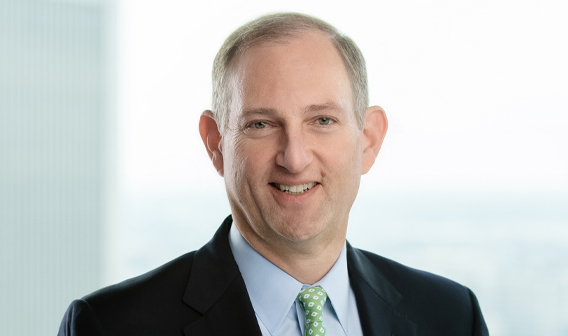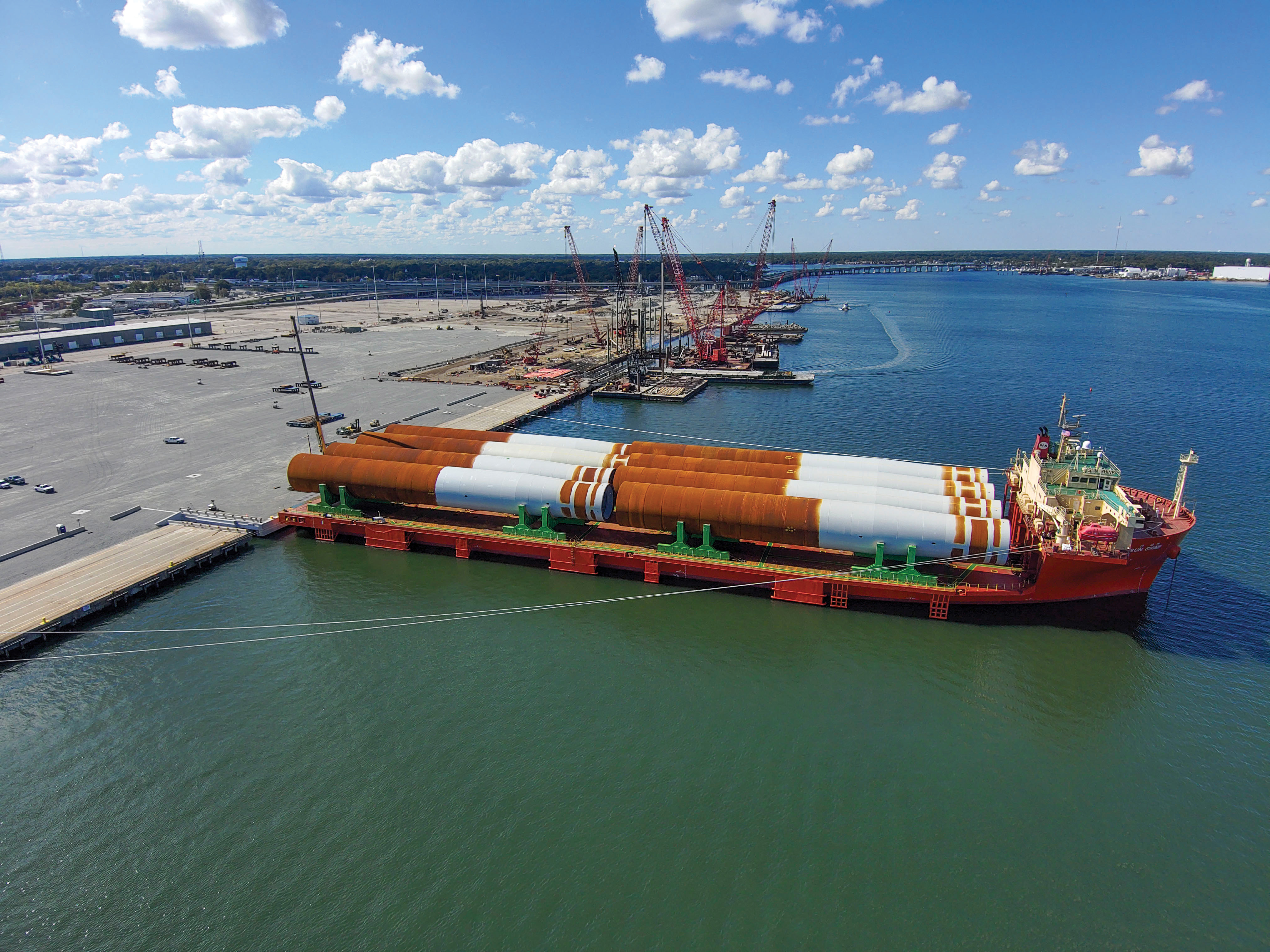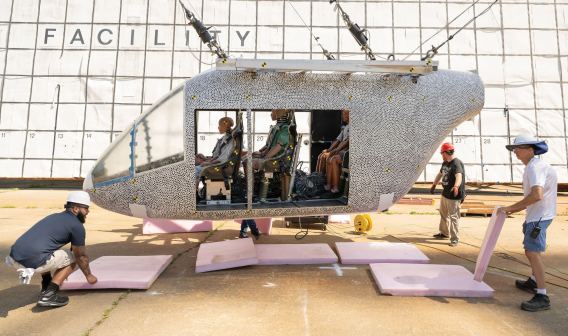
Bob Blue is chair, president, and CEO of Dominion Energy, Inc., an integrated energy utility headquartered in Richmond that operates in 15 states and provides energy to 7 million customers. He started his career with Dominion in the company’s public policy department and held several positions before being named CEO in 2020. VEDP President and CEO Jason El Koubi spoke with Blue about the company’s history serving commercial and residential customers and its efforts to shift the balance of its portfolio toward clean energy sources as it works toward its goal of net zero carbon emissions by 2050.
Jason El Koubi: Tell us a little bit about Dominion Energy — the organization, its footprint, and its various capabilities.
Bob Blue: We serve 7 million homes and businesses with electricity and natural gas. About half of those customers are electric customers in Virginia, North Carolina, and South Carolina, while the other half are natural gas customers in Ohio, Utah, and the Carolinas. We also operate some electric generation in states where we do not serve homes or businesses directly, but we sell that electricity to utilities who do. All that adds up to a diverse portfolio of energy that we strive to ensure meets our mission, which is providing reliable, affordable, and increasingly clean energy.
El Koubi: You’re charged with meeting the energy needs of people and businesses, reducing carbon emissions, and keeping rates affordable for those customers. How do you strike that balance and manage those different competing imperatives?
Blue: We think we’re doing pretty well. On the reliability front, let’s talk about Virginia, for example. At the end of October, a little more than 300 days into the year, in terms of hours — about 7,300 hours so far — our customers have been without electricity, on average, for three hours. If you subtract major weather events over which we have no control, we’re at about an hour and 45 minutes. Now, being without electricity for three hours, or one hour and 45 minutes, or one minute, can be very frustrating, and we intend to drive that number down as much as we can. But we’re proud of our record of reliability.
On the affordability front, when we compare ourselves to national averages, we have been below the national average for residential customer rates for the last 18 years. Our residential rates have grown by a little bit, more than 1% a year, and our commercial rates by a little less than 1%, since 2010. The rate of inflation over that period has been about 2.6%. Relative to other things that our customers are paying for, our rates are declining.
This summer, we were 21% below the national average. We’re 36% below the East Coast regional average. That’s for residential customers, but the story is the same for our industrial customers. We’re 16.7% lower than the national average and we’re 38.7% lower than the East Coast rate. That’s important when we think about trying to attract businesses to Virginia.
We’ve reduced our carbon emissions since 2005 by 46%. That’s 18 years of growth — we’re serving more customers and we’re serving more electric demand — but we’ve reduced carbon emissions by 46%. And we’ve reduced the other emissions that people think of by generating electricity. Whether it’s sulfur oxides or nitrogen oxides or mercury, we’ve slashed those by 90% or more over the course of the last 30 years.
The way we do that starts with a diverse mix of sources that we use to provide electricity to our customers — nuclear, natural gas, solar, hydro, biomass, coal, and now offshore wind. If we have those diverse sources and then we invest in the infrastructure needed to get our customers reliable service, and we’re efficient in our operations, that adds up to effectively achieving that critical mission that we have of reliable, affordable, and increasingly clean energy.
We’ve got work to do. Growth in demand is expected in Virginia, and that’s exactly what we want. We need to make sure we’re smart about investing in new generation, we’re smart about investing in new infrastructure, and we’re being innovative in thinking about the way we provide service to our customers.
El Koubi: I believe Dominion has a goal of net zero carbon emissions by 2050. That’s going to require careful management of everything that you’ve just described. How do you achieve that net zero carbon emissions goal by 2050 while also keeping up with the demand projections that we’re seeing in Virginia and elsewhere?
Blue: When I started working at the company in 2005, we generated about half the electricity that we provided to our customers from coal. Today, that’s closer to 10%. We have added in cleaner natural gas — highly efficient natural gas units that have helped reduce carbon emissions. Now, they’re lower carbon than coal, but they’re not carbon-free. What they give us, however, is the confidence to be able to add in more renewables going forward, largely meaning solar and wind.
Why do I say they give us that confidence? Solar and wind are not, in the industry parlance, dispatchable. Solar operates when the sun is shining, wind operates when the wind is blowing. It’s dark at night and it’s cloudy sometimes during the day. The wind doesn’t always blow consistently. If we have these natural gas units that we can operate, they can fill in when the wind isn’t blowing and the sun isn’t shining. As we go forward, we’ll add in more of these carbon-free sources like solar and wind and we’ll operate those gas units differently, or we may have a different mix of those gas units.
Some of the gas units we operate today are designed to run all the time. We’re proposing to add, for example, adjacent to our existing Chesterfield Power Station, what’s called a natural gas peaking plant — one that’s not designed to operate all the time but is designed to operate when demand is high and other generation sources are not there.
Renewables will get us a long way toward achieving our goal of net zero by 2050, but they’re not going to get us all the way. They’re going to need help from battery storage. Most of the batteries that are used across the industry today are lithium-ion batteries, which are good for about four hours. That’s great, but we’re looking to get something longer-duration. So, we’ve just announced a pilot with a battery that is closer to 100 hours’ duration. We’re looking to make sure that we’re thinking about all other possible technologies that will help us close the gap to 2050.
We operate a very important nuclear fleet that is carbon-free around the clock. Those plants were initially licensed for 60 years — many of them were built in the 1970s. They will meet the end of their current licenses in the 2030s. We’re now in the process of licensing those out to 80 years. In fact, the Surry Power Station is currently the only nuclear power station in America that is licensed from 60 to 80 years. North Anna will be, not too long from now, licensed out to 80 years. Continuing to operate those nuclear plants is going to be critical to our ability to achieve net zero by 2050 because they provide so much carbon-free electricity.
We’re looking at supplementing that existing nuclear fleet with what are called small modular reactors. Many of the component pieces of the reactors themselves are manufactured offsite and then installed on the site where we may want to put them. The Navy uses small modular reactors on submarines and aircraft carriers. They have not been deployed commercially yet in this country, but we’re examining that possibility.
We’re also looking at the possibility of using hydrogen. When hydrogen is combusted, it does not produce greenhouse gases. It can be created by taking water and, through electrolysis, separating out the oxygen from the hydrogen. It’s possible that we might be able to blend hydrogen into an existing natural gas plant. It’s possible, someday, that we might be able to operate a power plant with hydrogen.





